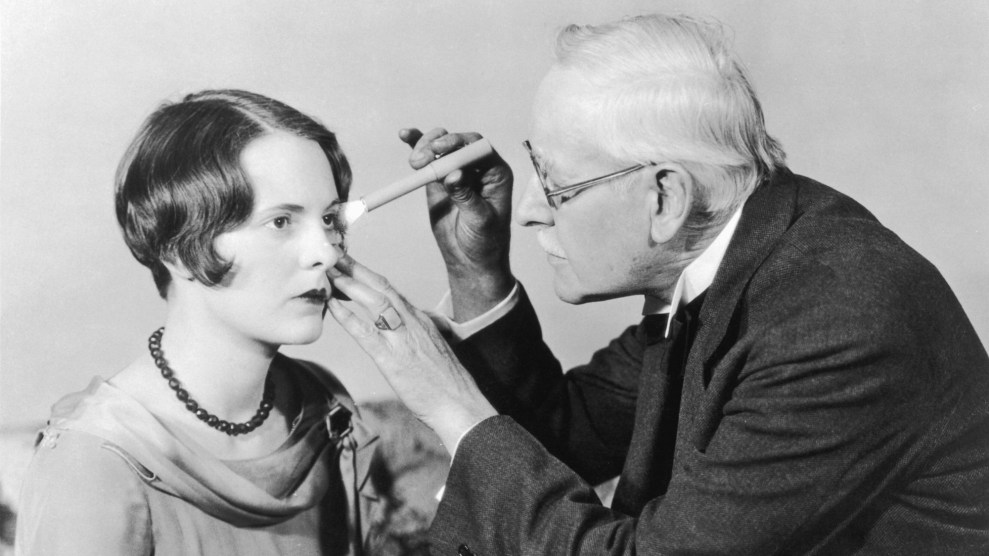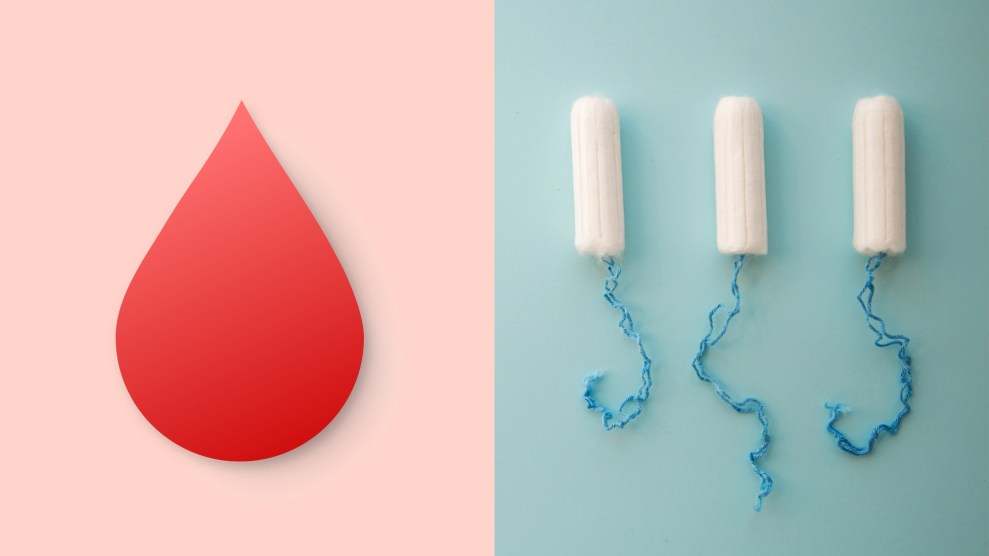
FPG/Hulton Archive/Getty Images
A quarter-century ago, doctors at Duke University Medical Center and three other major research universities set out to test new brain wave monitoring device on patients under general anesthesia. Usually, physicians monitored blood pressure, heart rate, and pupil dilation to figure out if patients were regaining consciousness. But the new device aimed to streamline the process by measuring brain waves to calculate a “consciousness” score for anesthesiologists as they kept patients in the delicate state during surgery—asleep, but not so deeply sedated as to develop unwanted side effects, like blood pressure problems.
Sex had nothing to do with it, at first. But when the researchers analyzed wake-up times, they found female patients woke up in an average of about seven minutes, compared to more than 11 minutes for men, when they were given the same doses of the same widely used anesthetic. The study team was shocked. “We discovered a large and unexpected difference in the recovery times of men and women,” the lead author told a journalist, who wrote that the finding had “perplexed” researchers.
And so, even though general anesthesia had been used in surgeries for a good 150 years, the medical community discovered pretty much by accident that female bodies reacted to it differently, and that many women had been getting a regimen meant for men. The story was recently retold by Cat Bohannon, a writer with a PhD in narrative and cognition from Columbia University, in her new book Eve: How The Female Body Drove 200 Million Years Of Human Evolution, which hit shelves on October 3. Bohannon has been spending the last couple of weeks giving delightfully funny and frank interviews, breaking down the “male norm” in medical science; why researchers have long treated female bodies as an aberration; and the key moments over the millennia as our messy, phenomenal, mammalian bodies evolved.
“Modern medicine, neurobiology, paleoanthropology, even evolutionary biology all take a hit when we ignore the fact that half of us have breasts,” Bohannon said while promoting the book.
But back to the not-so-shocking surprise of those male researchers realizing that biologically female bodies, are well, different, than males—and perhaps require . “It’s not that there’s some kind of evil cabal rubbing their hands together saying, ‘Muahaha, I will understudy females,'” Bohannon explained to host Tonya Mosley on a Fresh Air interview this week:
It’s actually that when you conduct a scientific experiment, you want to control for as many factors as you can. You want a clean experiment. So what you do is you try and reduce confounds, reduce what’s complicating what you’re seeing.
Well, usually, the ovary is thought of as an unfortunate complication because in all mammals, there’s an estrus cycle. There’s this cycle of hormones that rises and falls, right? Some of us do it more quickly, like every month for people like you and me, maybe…It takes longer if you’re, say, a mouse. But nevertheless, your hormones, they’re going up and down, and so that’s complicating the experiment. So a decision was essentially made by many different people in biology a long time ago that, well, maybe we just won’t study the females because the guys don’t have that.
On top of the need to keep experiments neat, researchers “didn’t want to screw up babies” Bohannon says—and thus, for many years, excluded women of reproductive age from clinical trials. “Unfortunately,” she adds,”being of reproductive age is, anywhere from 12 or 13 to in your early 50s.”
As a result of these past regulations, many prescription medicines on the market today may not have not been tested on female bodies at all. But according to Bohannon, things are starting to shift, with changing regulations and scientific organizations like the National Institution of Health pressuring researchers to disclose whether their study included biological females—rather than experimenting solely on male mice, for example, and then reporting results without disclosing the sex. But the NIH only controls a small fraction of biomedical research funding, Bohannon points out. The “real change,” she says, will come from journals deciding which papers to publish.
The hope is that medical researchers will start paying deliberate attention to sex differences as they develop the medical treatments that will affect our health for decades to come. In the case of the general anesthesia study, the researchers “didn’t really ask the question,” Bohannon writes in her introduction to Eve. “They realized, after the fact, that they should have asked the question. Not asking the question is dangerous.”
Check out Bohannon’s interviews on Fresh Air and KQED’s Forum.

















